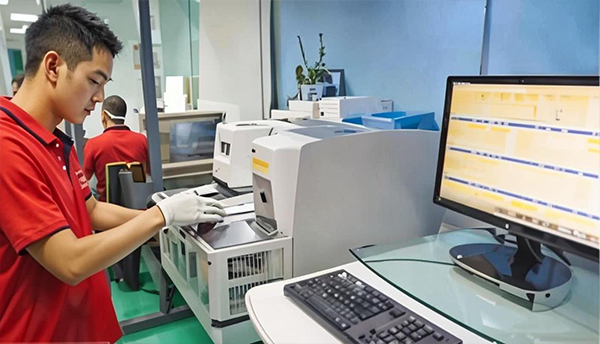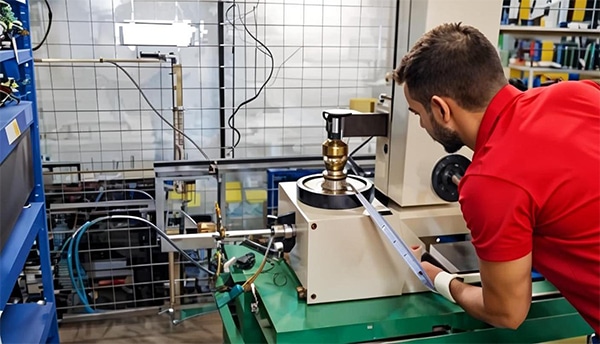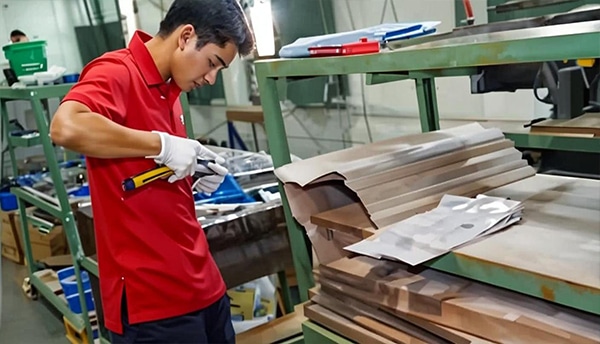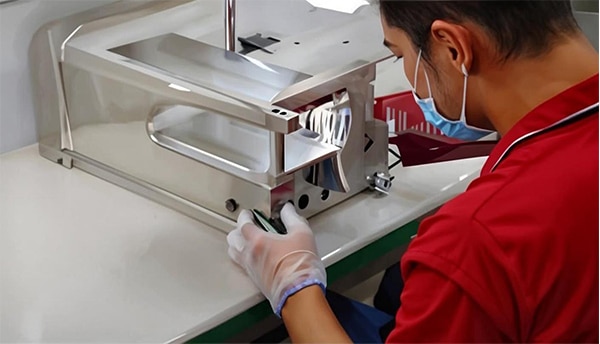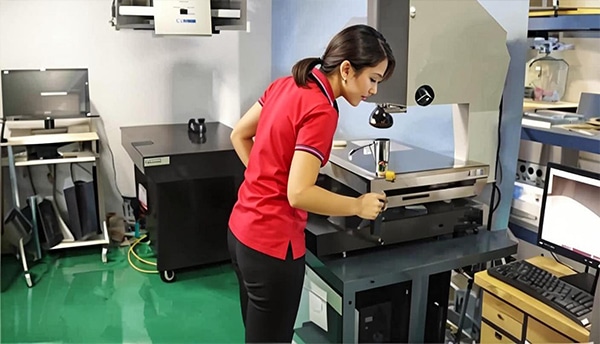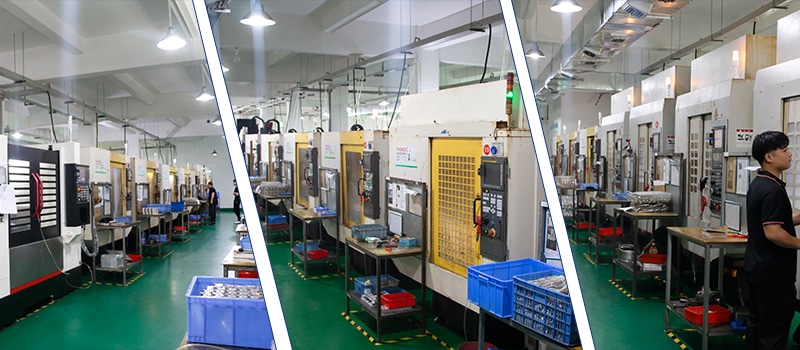Introduction to CNC Machining
CNC (Computer Numerical Control) machining represents a remarkable advancement in manufacturing technology, particularly for creating intricate components like stainless steel lightsaber parts. At its core, CNC machining employs programmed computer software to control machine tools, allowing for unparalleled precision and consistency in fabricating parts. This technology includes two primary processes: CNC turning and CNC milling, each serving distinct purposes in part production.
CNC turning involves a rotating workpiece that is shaped by a stationary cutting tool. This method is particularly effective for creating cylindrical components, such as lightsaber hilt sections, where uniformity and symmetrical design are essential. Conversely, CNC milling utilizes a rotating cutting tool to remove material from a stationary workpiece, ideal for generating more complex geometric shapes, including intricate designs found on lightsabers. The combination of these processes ensures that builders can achieve the exact specifications required for high-quality replicas or custom creations.
In the context of lightsaber manufacturing, stainless steel emerges as a preferred material due to its durability and aesthetic qualities. This metal offers not only strength and resistance to wear and corrosion but also a visually appealing finish that enhances the overall design. The ability to machine stainless steel with precision ensures that components fit seamlessly together, delivering both form and function in a lightsaber build.
The significance of precision machining in this realm cannot be overstated. It allows for the reproduction of detailed designs that are faithful to the original cinematic props or tailored to individual preferences. As a result, CNC machining has become an integral part of creating stainless steel lightsaber parts, merging technology with craftsmanship to bring these iconic pieces to life.
Understanding Stainless Steel as a Material
Stainless steel is a critical material widely used in the production of lightsaber parts, thanks to its exceptional properties. One of the most notable attributes of stainless steel is its remarkable strength. This strength ensures that parts can withstand mechanical stress and impact, which is particularly vital for functional lightsabers that may see active use. For display-oriented models, this strength contributes to the overall authenticity and durability of the piece, making it an appealing choice for collectors and enthusiasts alike.
Another significant property of stainless steel is its corrosion resistance. Lightsabers are often displayed in various environments, some of which may involve exposure to moisture and other corrosive elements. Stainless steel’s inherent ability to resist oxidation and degradation ensures that lightsaber components maintain their appearance and structural integrity over time. This quality not only enhances the longevity of the piece but also reduces the need for frequent maintenance, which can be a considerable advantage for users who favor both aesthetics and functionality.
Moreover, stainless steel exhibits excellent tolerance to high temperatures. This property is particularly beneficial in the CNC machining process, allowing for intricate designs to be achieved without compromising the material’s integrity. The ability of stainless steel to withstand these thermal extremes makes it suitable for various grades used in manufacturing lightsaber parts. For instance, 304 stainless steel, known for its good corrosion resistance and formability, is frequently utilized for outer casings. Meanwhile, 316 stainless steel, which offers superior resistance to pitting and oxidation, is often favored for internal components. Each grade brings its unique benefits, ensuring that CNC machining can produce high-quality, durable lightsaber parts effectively.
CNC Turning vs. CNC Milling in Lightsaber Production
The fabrication of lightsaber parts relies heavily on advanced technologies such as CNC machining, which encompasses various methods, including CNC turning and CNC milling. Both of these techniques play pivotal roles in the production of intricate and high-quality components necessary for creating functional and visually appealing lightsabers. Each method exhibits unique characteristics and applications that cater to specific design requirements.
CNC turning is a process where material is rotated against a cutting tool to shape cylindrical components. This technique is particularly useful for manufacturing lightsaber hilts and other cylindrical parts. The process allows for high levels of precision, ensuring that parts are symmetrical and fit well together. By employing CNC turning, manufacturers can produce complex shapes and surface finishes while achieving tolerances that are critical for the overall functionality of the lightsaber. The ability to rapidly produce parts with outstanding repeatability makes CNC turning a vital aspect of lightsaber production.
In contrast, CNC milling involves the movement of a cutting tool against a stationary workpiece, which is ideal for creating intricate details, slots, and shapes that contribute to the aesthetic appeal and functionality of lightsaber components. This process allows for three-dimensional shaping, making it suitable for fabricating intricate designs that are hallmark features of lightsaber parts. Advanced CNC milling machines equipped with multiple axes offer enhanced operational capabilities, enabling the production of complex geometries with high levels of accuracy.
Technological advancements in CNC machines have significantly improved both CNC turning and milling processes, resulting in higher efficiency and precision. The integration of computer-aided design (CAD) software with CNC machining allows for precise programming and simulation, minimizing errors during production. Such innovations enhance the overall quality of lightsaber parts, ensuring they meet the high standards expected by enthusiasts and collectors alike.
Quality Control in CNC Machining for Lightsaber Parts
Quality control is an essential component of the CNC machining process, particularly in the production of intricate stainless steel lightsaber parts. Given the precision required for these components, implementing stringent quality assurance measures is vital to maintain high standards. Various techniques are utilized to ensure that each part adheres to both design specifications and functional requirements.
One of the primary methods employed in quality control is dimensional inspection. This procedure involves meticulously measuring the dimensions of machined parts to verify that they conform to the outlined tolerances. By employing tools such as calipers, micrometers, and coordinate measuring machines (CMM), manufacturers can detect deviations from the specified dimensions early in the production process. This early detection not only prevents defective parts from progressing further down the production line but also reduces waste, ultimately saving time and resources.
Besides dimensional inspections, surface finishing processes play a crucial role in ensuring the quality of lightsaber components. Techniques such as grinding, polishing, and anodizing not only enhance the visual appeal of the parts but also improve their performance and durability. A finely finished surface reduces friction, which can lead to smoother operation when parts are assembled. Additionally, a well-executed surface finish can prevent corrosion, further extending the lifespan of stainless steel components.
Furthermore, employing standardized quality control protocols, such as ISO 9001, instills a culture of quality within the manufacturing environment. These standards guide manufacturers in maintaining consistency across their products, positioning them to meet customer expectations effectively. Quality control, therefore, is not merely an afterthought but an integral facet of the CNC machining process that ensures each lightsaber part contributes to the overall excellence of the final product.
The Future of CNC Machining in Custom Lightsaber Creation
The landscape of CNC machining is undergoing significant transformation, particularly in the realm of custom lightsaber creation. The integration of advanced technologies, including 3D printing and artificial intelligence, is reshaping manufacturing processes, allowing for unprecedented customization and complexity in design. These innovations enable makers to produce intricate lightsaber components that cater to individual preferences and styles, emphasizing personalization.
As consumers increasingly seek unique and personalized lightsabers, the demand for custom parts is on the rise. CNC machining, coupled with 3D printing technology, offers the unique ability to create complex geometries that were once considered impractical or too costly. With the aid of these technologies, designers can experiment with different materials, forms, and finishes, resulting in highly individualized lightsaber parts that reflect the user’s character and aesthetics.
Artificial intelligence is further enhancing CNC machining capabilities by streamlining the design process. AI algorithms can analyze usage patterns and trends, providing insights that inform designers about consumer preferences and emerging styles. This data-driven approach is crucial for manufacturers aiming to stay competitive in a specialized market where customer demands for originality are paramount.Harnessing these insights, artisans can create tailored solutions and innovative designs that resonate with a diverse audience of lightsaber enthusiasts.
Moreover, the evolution of CNC machining technologies allows small-scale makers to enter the market with lower barriers. Home-based workshops equipped with advanced CNC machines can produce professional-grade parts without the need for large-scale manufacturing facilities. This democratization of production empowers a new generation of creators who can contribute to the expanding universe of custom lightsaber designs, allowing fans to forge their personalized connection to this iconic accessory.
As these trends unfold, it is evident that the future of CNC machining in custom lightsaber creation will be characterized by enhanced personalization, intricate design opportunities, and the growing involvement of hobbyists and small-scale manufacturers. This confluence of technology and creativity bodes well for the evolution of lightsaber craftsmanship.




